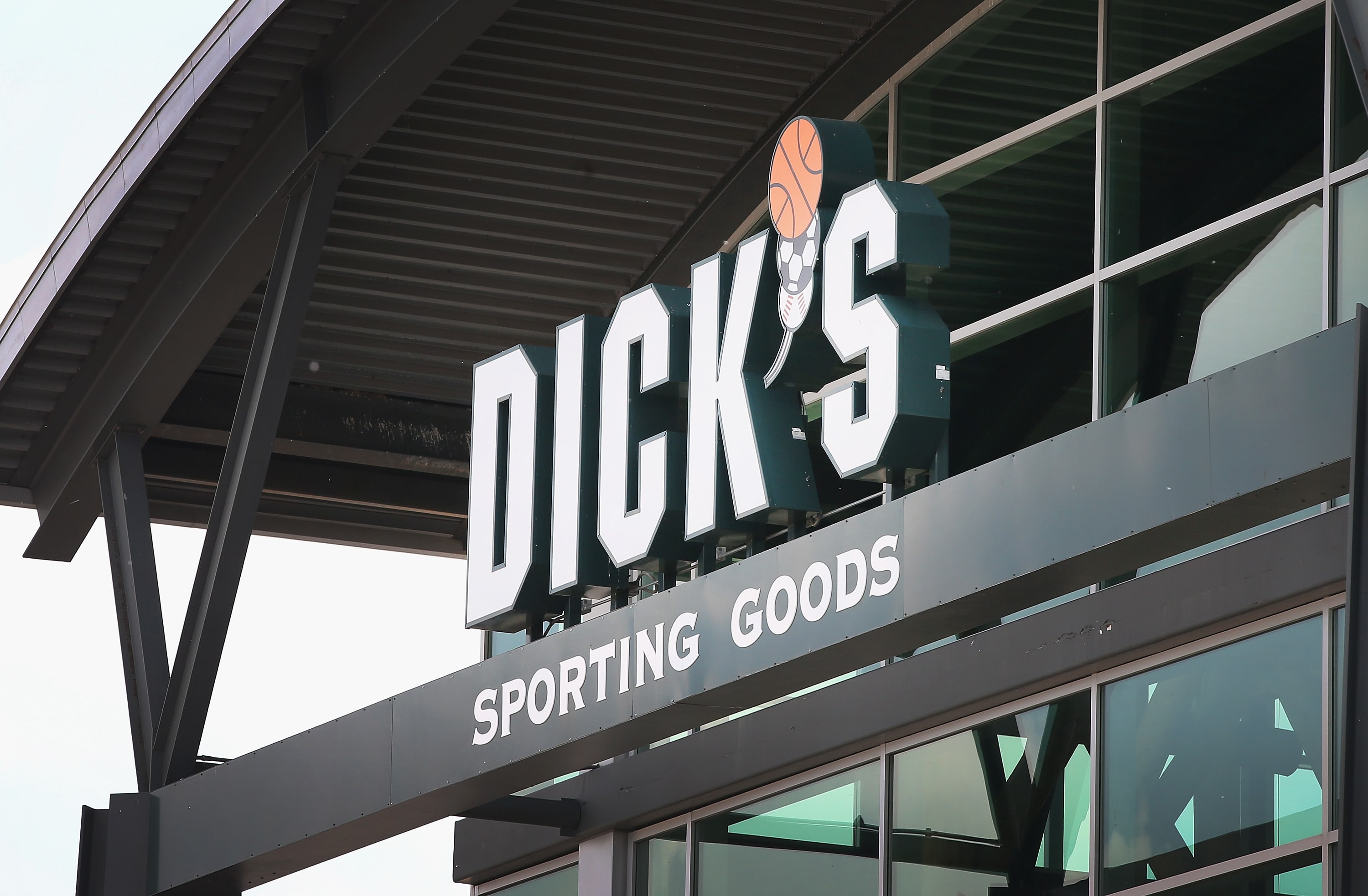Dick’s Sporting Goods launches its own men’s athleisure line, rivaling Lululemon

VRST is debuting Tuesday on both Dick’s Sporting Goods’ website and a standalone VRST.com, and will be rolled out to more than 400 Dick’s Sporting Goods locations across the country in the coming weeks.
Source: Dick’s Sporting Goods
Dick’s Sporting Goods has entered the hotly contested market for men’s athletic apparel with the launch of its own brand, VRST.
VRST debuted Tuesday on Dick’s website and a stand-alone site. Products of the brand will roll out to more than 400 Dick’s stores in coming weeks, the company said. Items in the line — which include everything from joggers and shorts to T-shirts, quarter-zips, and hooded sweatshirts — retail from $30 to $120, putting it on the higher end of the market.
Following Dick’s success with its Calia athleisure line for women, the retailer said it saw a blank space in its stores to have a more upscale and lifestyle-driven line for men. The line won’t compete directly with the sweat-wicking performance gear sold by Under Armour and Nike. Instead, it’s more similar to Lululemon.
However, the company’s amped up private-label investments come as big-name brands such as Nike and Under Armour have pledged to sell more merchandise directly to consumers. Adidas said earlier this month its direct-to-consumer vertical should make up 50% of net sales by 2025. While Dick’s still carries these brands, the pivot has put more pressure on wholesale retailers to have exclusive lines to drive traffic and sales.
Dick’s rang up $1.3 billion in sales from its in-house brands in 2020. Total revenue was $9.58 billion. The company said its own brands outperformed national labels in the golf, fitness, outdoor equipment and team sports categories. It said Calia was the second-best women’s apparel brand, behind Nike last year.
Filling the ‘white space’
VRST is the second brand that Dick’s has launched with its own website, following Calia.
“When you see VRST, it will be a very different product assortment from when we have with our core vendor partners right now, and it is a white space,” CEO Lauren Hobart said during a March earnings call. “It covers a broad range of activities.”
“VRST will put us in a much stronger position to compete with similar offerings from premium apparel brands and specialty athletic apparel stores.”
Items in the VRST line, which include everything from joggers, shorts, tees, quarter-zips, and hooded sweatshirts, retail anywhere from $30 to $120, putting it on the higher end of the market when it comes to price point.
Source: Dick’s Sporting Goods
Companies like Lululemon, Nike, Adidas and Under Armour have outperformed clothing brands focused on work wear and dressier items over the past 12 months. This led more traditional apparel brands and department store chains to quickly shift their merchandise and marketing to center around casual and comfort clothing, adding more players to an already crowded space.
Activewear grabs market share
Lululemon, for example, said before the pandemic it planned to double its men’s business in five years. Direct-to-consumer men’s athleisure brands such as Rhone, Ten Thousand and Vuori have also doubled down on online-marketing spending to reach new customers. Even department stores Nordstrom and Kohl’s have put a renewed focus on activewear in a bid to boost sales. Kohl’s’ efforts include an in-house line called FLX, which debuted this month.
At the same time, there has been enormous growth in the space.
Men’s activewear accounted for 45% of the total men’s apparel market last year, up from 39% in 2019, according to consumer research firm NPD Group. Categories that helped drive dollars in the space included sweatpants, which were up 16% year over year, and sweatshirts, which rose 3% from 2019.
VRST wasn’t created to take advantage of a pandemic pop; it has been in the works for a few years, the company said.
“And obviously we’re maximizing the current momentum,” said Nina Barjesteh, senior vice president of product development. “But more than anything, we continue to look at the long run, and make sure that we’re building products that you want to come back for more.”
Dick’s shares were down 2.8% Tuesday but are up 258% over the past 12 months. The company has a market cap of $6.8 billion.




